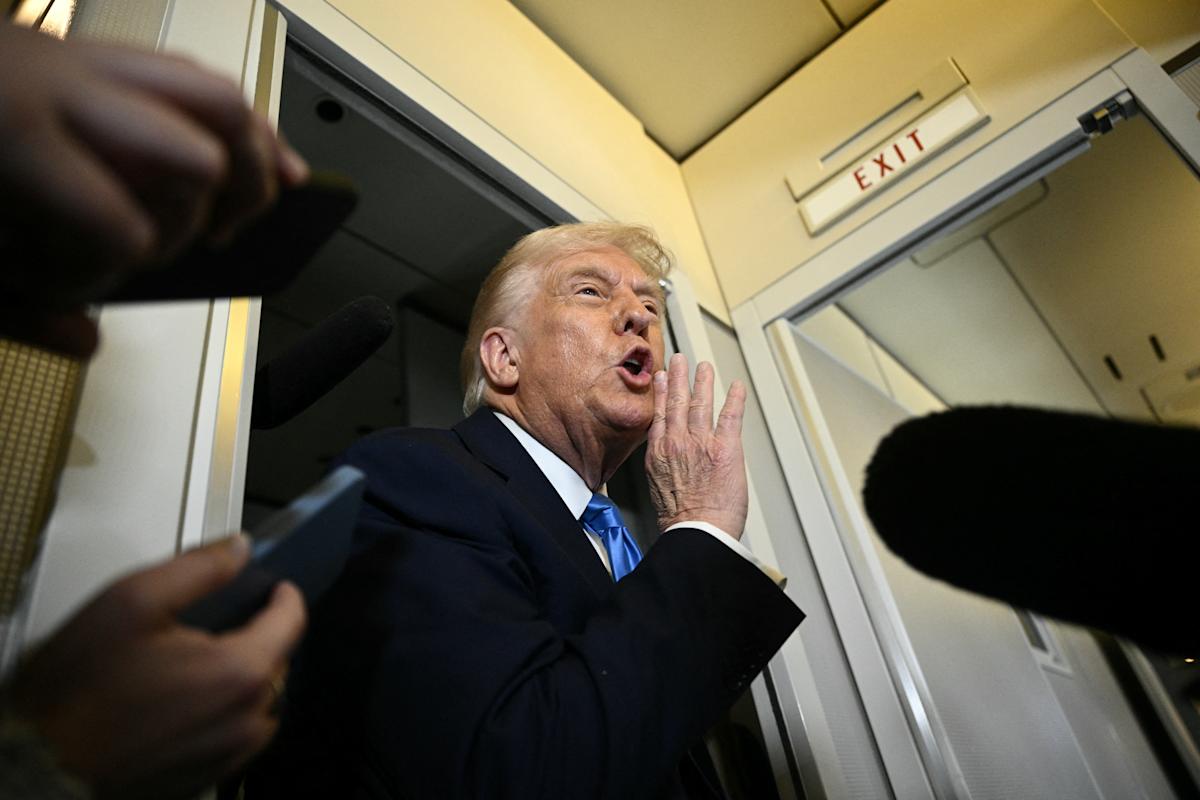Unlock stock picks and a broker-level newsfeed that powers Wall Street.
What if tariffs are only the beginning? What if President Trump has a far bolder plan to reshape the US economy, regardless of the consequences?
Investors hope it isn’t so. But they’re still paying attention to a concept known as the “Mar-a-Lago Accord,” which would dramatically rewire global capital flows by permanently devaluing the US dollar, refinancing trillions of dollars of US debt, and putting the United States in a much more adversarial role with its trading partners. Most doubt it will amount to anything, but Trump is so unpredictable that investors are learning to prepare for the unthinkable.
The idea of a “Mar-a-Lago Accord” comes from Stephen Miran, who was a senior strategist at investing firm Hudson Bay Capital last November when he wrote a 41-page essay on“restructuring the global trading system.” Miran wrote from a Trumpian perspective, explaining how the incoming president’s fondness for tariffs and protectionism could be the basis for reshaping much of the global economy.
The paper probably would have gotten little notice, except that Trump tapped Miran to head the White House Council of Economic Advisers. He started the job this month. Trump himself hasn’t said anything publicly about Miran’s Mar-a-Lago plan.
But now that Miran is a Trump whisperer, investors want to know what he might be whispering. “Wall Street can’t stop talking about the Mar-a-Lago Accord,” MarketWatch declared earlier this month.
The basic premise behind Miran’s plan is that the US dollar has been overvalued for decades, leading to chronic trade deficits — and the migration of manufacturing out of the United States to other countries such as China. Reversing that imbalance would therefore require a devaluation of the US dollar, something Trump does seem to favor.
When the dollar is relatively strong, imports become cheaper to Americans, while US exports to other countries become more expensive. That shows up as a growing trade deficit in goods, as the gap between imports and exports grows. The goods trade deficit was $1.2 trillion in 2024, the highest ever and 175% larger than the deficit in 2000.
Trump thinks the growing trade deficit is inherently bad. Economists don’t necessarily agree.
The US economy is powered by consumption, and more imported products at lower prices boost the buying power of Americans. Running a trade deficit isn’t harmful if the US economy is otherwise healthy, with high levels of investment, innovation, and job creation.
Many experts also think a strong dollar is better for the United States than a weak dollar. “A Mar-a-Lago Accord would be pointless, ineffectual, destabilizing, and only lead to the erosion of the dollar’s pre-eminent role in the global financial system,” economists Steven Kamin and Mark Sobel of the American Enterprise Institute wrote recently.



